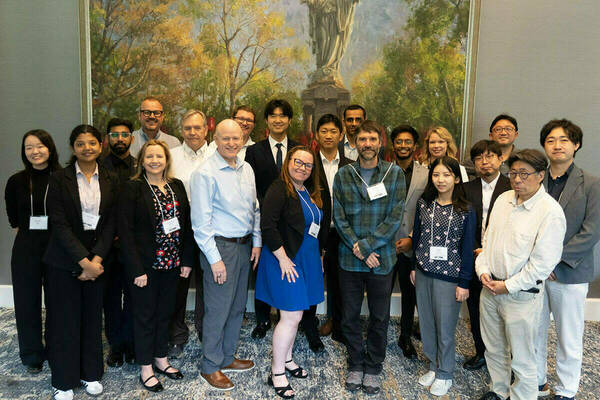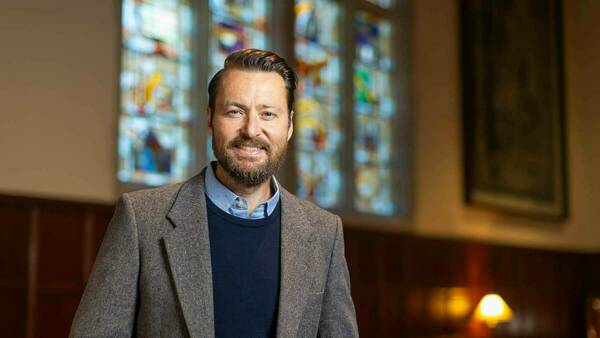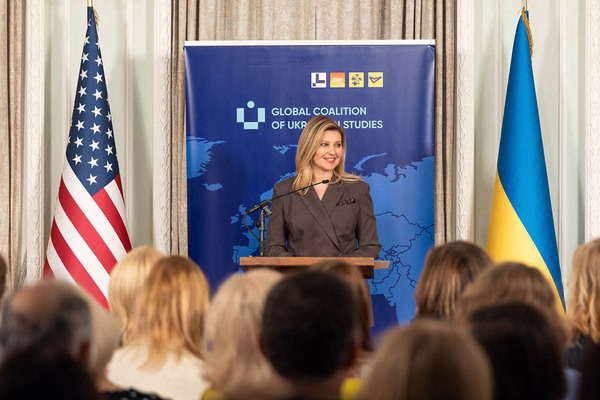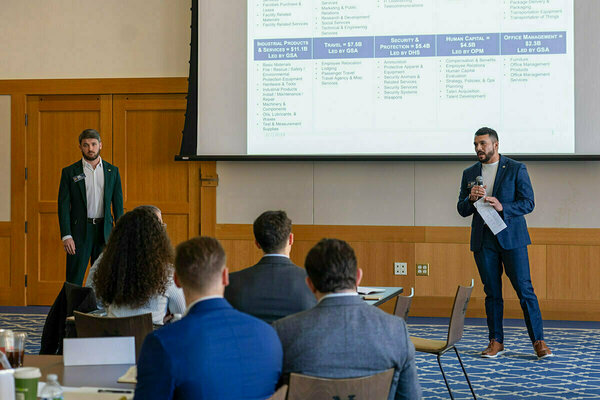Notre Dame helps bring the first high-resolution transmission electron microscope to Armenia

The University of Notre Dame’s Integrated Imaging Facility (NDIIF) has helped Armenia reach a historic milestone by supporting the acquisition and implementation of the country’s first-ever high-resolution transmission electron microscope (TEM).
This achievement marks a significant step forward for scientific research in Armenia. The new Talos F200i high-resolution TEM, now installed at the Institute for Physical Research of the National Academy of Sciences of Armenia (IPR NAS), with funding from the Higher Education and Science Committee of Armenia, enables groundbreaking advances in materials science, nanotechnology, and biological research within the country.
NDIIF’s 15 years of expertise in electron microscopy proved invaluable throughout the project. The facility provided critical support by establishing connections with major vendors in the electron microscopy market and assisting in the selection of an optimal TEM to address the specific scientific challenges faced by Armenian researchers. The NDIIF team then aided in price and warranty negotiations and coordinated the delivery and installation of the TEM in Armenia.
The effort was led by Alexander Mukasyan, a research professor in the Department of Chemical and Biomolecular Engineering and the director of the Advanced Electron Microscopy Core at NDIIF. Mukasyan said, “We were honored to support the effort to bring Armenia its first high-resolution TEM. We’ve also been delighted to help in the next step—developing local expertise to fully leverage this technology.”

Dr. Astghik Kuzanyan, a researcher at IPR NAS’s Materials Science Laboratory, underwent comprehensive training at the NDIIF. This hands-on experience, made possible by NDIIF’s ownership of an identical model of the TEM, equips Kuzanyan with the skills to independently operate the microscope and train other scientists in Armenia.
Dr. Kuzanyan’s was the first in a planned series of visits and collaborations. Tatyana Orlova, the NDIIF’s electron microscopy specialist, will help guide the acquisition and installation of Armenia’s first Dual Beam NANOlab, an instrument that will complement the TEM. Additionally, Dr. Maksym Zhukovskyi, program director for the NDIIF’s TEM program, is scheduled to travel to Armenia to address operational questions and provide further technical assistance.
Kuzanyan expressed her appreciation for NDIIF’s support. “Thank you, Notre Dame and NDIIF, for this opportunity to train and collaborate,” she said. “Your expertise will help me operate our new TEM and contribute to advancing science in Armenia. I look forward to continuing this partnership.”
NDIIF’s engagement with Armenian scientists speaks to the University’s commitment to international engagement. Notre Dame’s expanding set of global research collaborations currently includes over 170 active externally funded research projects in over 60 countries around the world.
To learn more about the NDIIF’s capabilities and ongoing research projects, please visit the Integrated Imaging Facility's website.
Contact:
Brett Beasley / Research Content Strategy Program Director
Notre Dame Research / University of Notre Dame
bbeasle1@nd.edu / +1 574-631-8183
research.nd.edu / @UNDResearch
About Notre Dame Research:
The University of Notre Dame is a private research and teaching university inspired by its Catholic mission. Located in South Bend, Indiana, its researchers are advancing human understanding through research, scholarship, education, and creative endeavor in order to be a repository for knowledge and a powerful means for doing good in the world. For more information, please see research.nd.edu or @UNDResearch.
Latest Research
- Fighting for maternal healthThe United States has the highest maternal mortality rate of developed nations. An innovative postpartum care model from Notre Dame can save mothers around the globe. Read the story Originally…
- NSF Cyber SMART’s fall meeting shapes fifth year of project, legacy and future plans, and adds new memberThe U.S. National Science Foundation (NSF) Cyber SMART center gathered for its fall meeting on the University of Notre Dame campus this September. The meeting served as a checkpoint with progress reports and new projects from research leads and students…
- Slavic and Eurasian studies professor wins Humboldt fellowship to research how Russia’s religious past shapes its presentWhen Russia invaded Ukraine on Feb. 24, 2022, Sean Griffin realized his second book needed a new title. Griffin, an associate professor in the University of Notre Dame’s Department of…
- Notre Dame’s R.I.S.E. AI Conference builds interdisciplinary collaboration to inform human-centered artificial intelligenceAs artificial intelligence (AI) transforms nearly every sector of society — from healthcare and education to governance and global development — a critical question emerges: How can we conscientiously design and deploy these powerful technologies to positively impact society? This…
- University of Notre Dame joins the Global Coalition of Ukrainian StudiesThe University of Notre Dame has joined the Global Coalition of Ukrainian Studies after signing a Memorandum of Cooperation (MOC), formalized on September 24, 2025, at the Ukrainian Institute of America in New York City. Notre Dame joined four other American…
- The University of Notre Dame’s Mendoza College of Business and Industry Labs team up to inspire national security manufacturing competitiveness in the regionThe South Bend - Elkhart Region is full of manufacturing companies that are poised to grow, and Executive Master of Business Administration (EMBA) and Master of Business Administration (MBA) students at the University of Notre Dame are finding innovative ways to contribute to that growth. Earlier…













